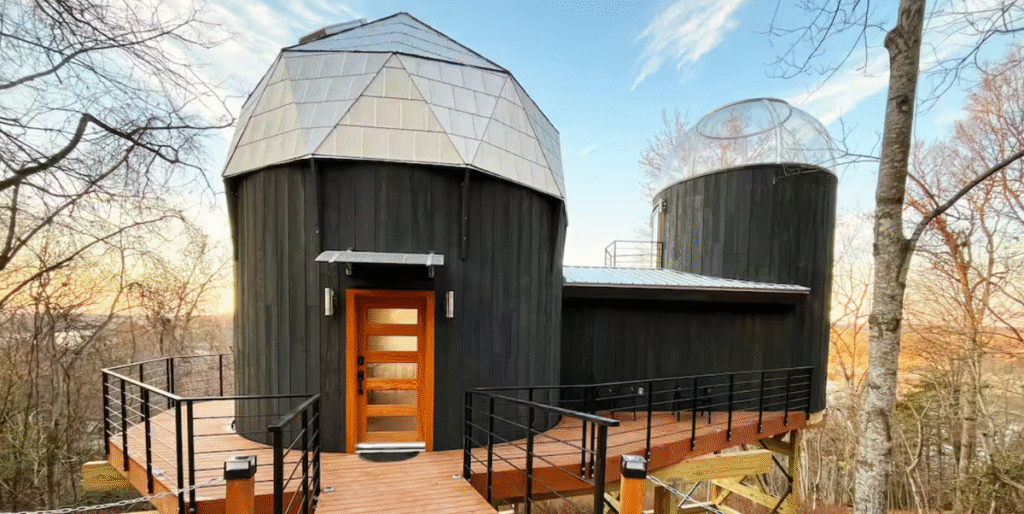From bathhouses and petting zoos to Wild West replicas and log flume rides, Northern Nevada has had a long history of amusement parks geared for summer fun. Most are gone, but their legacy lives on in street names and repurposed structures. Here’s a look at four parks lost over the past 120 years.
Moana Springs, Reno
Moana Springs was the brainchild of of Charles Short. After visiting Hawaii, he began planning a recreational area in late 1903. Short selected the name “Moana” from Hawaiian mythology. Moana, an island fairy princess, cured the sick, lame and blind and even restored the bloom of youth to old folks. The resort opened in late 1905 at the present-day intersection of Moana Lane and South Virginia Street — a spot that was then three miles south of town.
In its heyday, the resort’s amenities included not only the mineral baths, but also an ice cream parlor, dance hall, 100-foot-long bar, movie theater, café, boating and picnic grounds and a mini zoo with bears, wildcats, monkeys and eagles. The resort activities included band concerts, swim races, shooting contests, boxing and wrestling matches, Wild West shows, bucking horse competitions, moonlight and daytime picnics, camping and other outdoor activities.
In 1910, the park became world famous when boxer Jim Jeffries unsuccessfully trained at Moana for the heavyweight title against Jack Johnson for what was dubbed the Fight of the Century.
On Nov. 5, 1926, a fire broke out in the unoccupied wooden bath house and quickly consumed the structure, leaving only the concrete swimming pool. In 1956, the Board of Health demanded the pool be closed for health reasons, and the city closed the pool and razed the bath house that December. The city sold bonds to replace the pool that opened in November 1960. When the old boilers failed in 2007, the pool closed. The site’s baseball park, dating back to 1908, was demolished and converted to youth soccer fields in 2012.
— Excerpt from a 2012 column by Nevada historian Patty Cafferata.
Coney Island Amusement Park, Sparks
Coney Island, the region’s go-to summer spot in the early 20th century, opened as Wieland’s Park in July 1905 with a dance hall, bar and lunch counter, right along the streetcar line which ran between Sparks and Reno. For founder Otto Benschuetz, who ran the local outlet for John Wieland Brewing Co., the park was a lifelong passion project — he bought adjacent land to expand the park to three acres.
The expanded park reopened as Coney Island Amusement Park in June 1909, featuring a “bicycle merry-go-round for children, new imported steel swings, turning apparatus, imported steel boats, gasoline launches, fairy boats and row boats,” according to a print ad in the Reno Evening Gazette. The ad also announced plans for a “Shoot the Chutes,” an early version of a log flume ride.
As the park grew, Benschuetz planted trees, dug a lake, installed electric lights and brought in burros for kids to ride, and brought in bands, divers and high-wire acts throughout the summer. All told, Benschuetz invested more than $26,000 in the park — nearly $750,000 in today’s dollars. His death in 1912 marked the end of the park’s glory years, though his park carried on for a few more decades. Two fires burned down both the original dance hall, and then its replacement, in 1927 and 1930.
The last echo of Coney Island Amusement Park lives on in the name of Coney Island Bar, the venerable Prater Way bar and restaurant which once sat across the street from the park; and Coney Island Drive, named in 1953 to honor the park. Much of the park’s former location is now covered by Interstate 80.
Ponderosa Ranch, Incline Village
A theme park based on the long-running TV series “Bonanza,” Ponderosa Ranch drew thousands to the northeast shore of Lake Tahoe. The park’s 570-acre spread started out as Incline Stables, a ranch which served as home for the horses featured on the show. When fans of the show descended upon the location, ranch owners Bill and Joyce Anderson themed out the area and opened the gates in 1968.
The park billed itself as “Western fun for everyone,” with attractions including gold panning, a petting zoo, a shooting gallery, a replica Virginia City — and the centerpiece, a recreation of the Cartwright Ranch House, which served as the focus for the series. Several episodes of the series were shot partially at the theme park, as well as three made-for-TV movies.
The series ended its original run in 1973, but the park stayed in business until 2004. But it wasn’t loss of interest that shut down operations at Ponderosa Ranch. Royce Anderson, son of the park’s founders, said the park drew a record 250,000 during its final year in operation, but the park’s land value was extremely high. A group of government agencies attempted to buy the park to preserve the land for public access, without luck. Incline Village resident and software billionaire David Duffield purchased the property for a reported $59 million.
Great Basin Adventure, Reno
Rancho San Rafael Park in north Reno once played host to an attraction focused on Nevada’s mining and natural history, complete with replicas of a stamp mill and eastern Nevada’s Lehman Caves, a log flume ride, pony rides and a petting zoo.
A joint project of the Washoe County Parks Department and the Junior League of Reno, Great Basin Adventure took up five acres at Rancho San Rafael. The Wilbur May Foundation donated more than $2 million toward the park’s construction, and the park opened in the summer of 1987. But by late 1988, controversy over the vision of the park’s attractions began to boil over. Critics began to worry about parking and traffic and accused the park’s advisory board of turning Rancho San Rafael into a “Knott’s Berry Farm,” a reference to the 57-acre theme park in southern California.
Ultimately, the Great Recession’s lingering impact on Northern Nevada budgets spelled the end of the park’s more ambitious features. In early 2010, Washoe County officials voted against funding for a new conveyor belt for the log flume ride and fire safety changes at the mining mill. The park’s Discovery Museum continues to operate, thanks to volunteers who stepped up during the downturn. Infrastructure for the log flume ride was converted to a tractor museum in 2015.
Nevada historian Patty Cafferata contributed to this article.
Something missing from the list? Email me at bmcginness@rgj.com.
Brett McGinness is the engagement editor for the Reno Gazette Journal. He’s also the writer of The Reno Memo — a free newsletter about news in the Biggest Little City. Subscribe to the newsletter right here. Consider supporting the Reno Gazette Journal, too.


